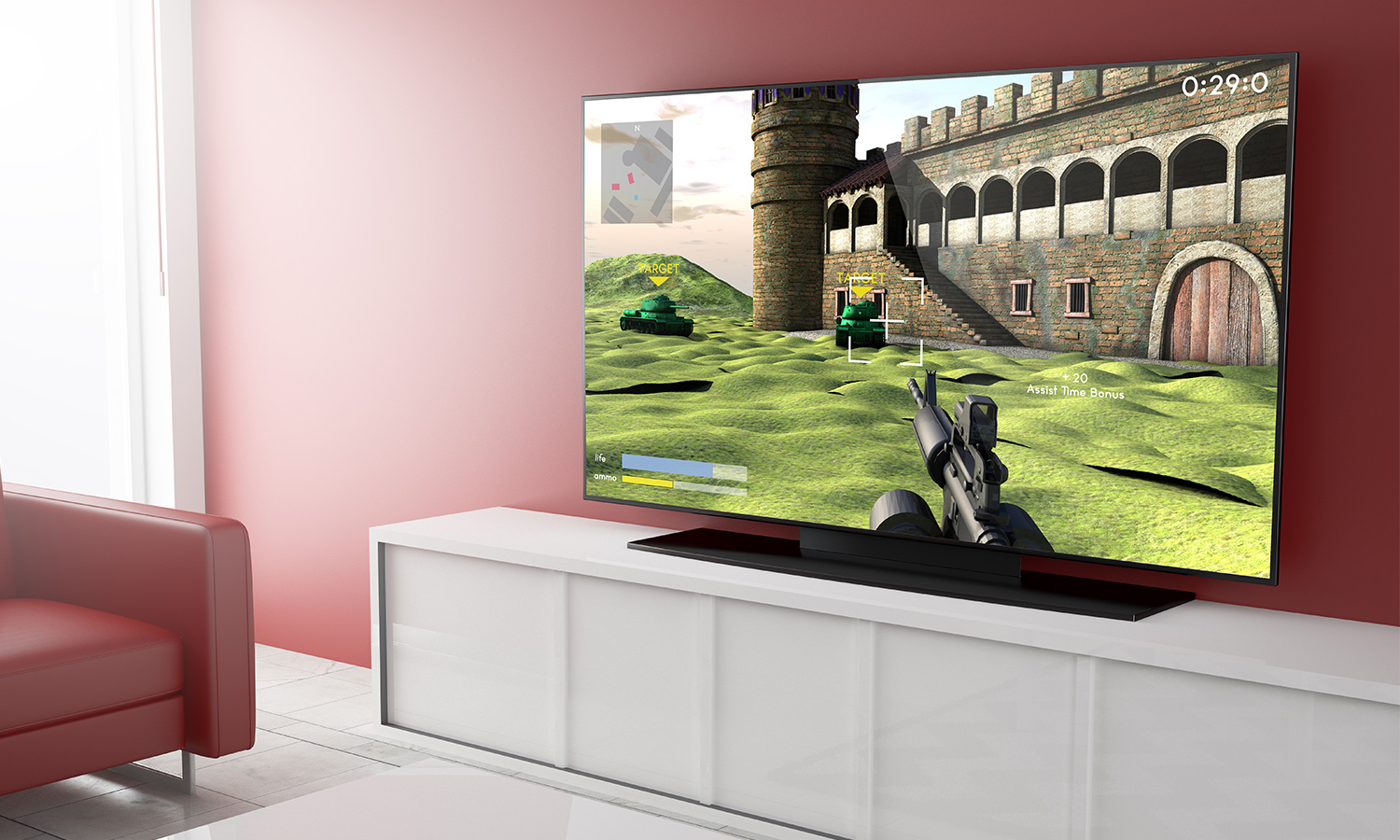1080p vs. 4K Gaming: Everything You Need to Know
Here's what you need to know about the difference between 4K and 1080p gaming before you buy your next PC.
True 4K gaming is becoming increasingly accessible, which means that PC gamers looking to make the jump have a lot of things to take into consideration. Gameplay performance and frame rates can take a dip when you turn things up to 4K, and upgrading can mean some steep costs.

Here's what you need to know about 4K and 1080p gaming before deciding what hardware to buy, and how much to spend.
The Basics
4K is poised to be the next standard in image resolution size, with a pixel count of 3840 x 2160, which doubles the traditional HD dimensions of 1920 x 1080, or "1080p." This means your monitor and, chiefly, your graphics card are going to need a nice upgrade before you can enjoy 4K content. There are currently plenty of options for 4K-ready hardware, but not all games support this resolution, and capable 1080p hardware can cost considerably less than a 4K setup.
Reasons to Upgrade to 4K
A 4K image is effectively twice as sharp as a 1080p image, affording you a lot more detail — especially if you have a 4K monitor that you'll be sitting very close to. You'll also be looking at a rapidly expanding library of games that support this new resolution. This means that if you're in the market for a new PC or are looking to overhaul that loud and dusty tower, then you might want to land on the 4K side of things to get the most mileage out of your upgrade.
Pricing for 4K hardware is also coming down precipitously, as the adoption rate of developers and gamers continues to climb. In the span of just two years, the price of a card like the very capable EVGA GeForce GTX 1080 dropped by $100, while in the same period, this Samsung 28-inch 4K monitor dropped by $150.
MORE: Best Gaming Monitor - Budget, G-Sync and 4K Monitors
Reasons to Stick with 1080p
A resolution of 1080p is still the HD standard that most PC games support, and just about any PC monitor purchased in the last decade will handle this resolution. While the image is less detailed than what you get with 4K, the resolution jump to 4K doesn't put 1080p in the dust quite like the jump from standard definition to high definition did back in the early 2000s. The aspect ratio of 16:9 is the same across a 4K and a 1080p image.
And while 4K prices continue to fall, a competent 1080p setup will come at a much more budget-friendly price, which will leave you more cash for components and accessories. It's also worth noting that 4K is greatly improved by something called high dynamic range lighting or HDR, which isn't even on the market yet. Dell announced an introductory price of $700 for its first HDR monitor. Waiting for better pricing and availability might be worth it, so you can take advantage of both of these technologies.
Half the resolution also means half the price.
Finally, performance can be a key factor in sticking with a less-taxing resolution. Even if you have powerful hardware, 4K gaming can cause noticeable frame-rate dips. Playing at 1080p, however, generally allows for smoother and more precise gameplay, which is especially important if you game competitively. A stable 60 frames per second at 1080p might end up as 30 frames at 4K if you don't have a sufficiently capable setup.
MORE: Asus' 4K HDR G-Sync Monitor is a Gamer's Dream
What You Need for 4K vs. What You Need for 1080p
A 4K setup is going to require a 4K monitor and a relatively high-end GPU. If we're looking at the typical monitor size of about 27 inches, a 4K display like this Asus 28-inch monitor can have a list price of around $399. Comparatively, this same-size 1080p monitor by the same manufacturer lists for only $199. Half the resolution also means half the price.
A midrange GPU like the GTX 750 Ti will do the job well for a 1080p setup and lists for only $129. But for 4K gaming, you'll want go up the scale to Nvidia's GTX10 series or above. The GTX 1070, which is a 4K-ready, high-end card but not nearly the most expensive you can go, will cost you about $399. Again, the price difference is pretty dramatic.
It's worth considering that a middle ground does exist between 4K and 1080p, splitting the difference between cost and performance demand. There are 1440p monitors, sometimes classified as "2K," and they will cost about as much as 4K displays of the same size, but the resolution will be much less demanding on your hardware. The $329 price of this Asus 1440p monitor is not far off from the 4K equivalent. You'll be paying a 4K price for your monitor, but you'll get away with spending a 1080p price for your GPU and other components.
MORE: The Best 4K Laptops
Bottom Line
If you're looking to future-proof your newest PC as much as possible, then aiming for 4K is definitely the route to take. Support is only growing by the day, and 4K does represent a significant increase in image quality. But if you're not looking for the very latest in visual fidelity, or if you're looking for significant savings while still jumping in on the newest games, then aiming for 1080p will still serve you well for many years to come.
Photo credit: Shutterstock/George J. McLittle
Sign up to get the BEST of Tom's Guide direct to your inbox.
Get instant access to breaking news, the hottest reviews, great deals and helpful tips.
Andrew Melcon is a freelance writer who specializes in covering games and gaming hardware. He's tackled everything from PC game controllers to Pokémon and PUBG and his work has appeared on sites including Tom's Guide, Tom's Hardware, Laptop Mag, and more.
-
Oath This article is correct. It is twice as sharp. Not four times. There are four times the pixels, yes. However, there are only twice vertically or horizontally.Reply
Source: I am a Software Engineer who has spent most of his time developing aliasing removal.
